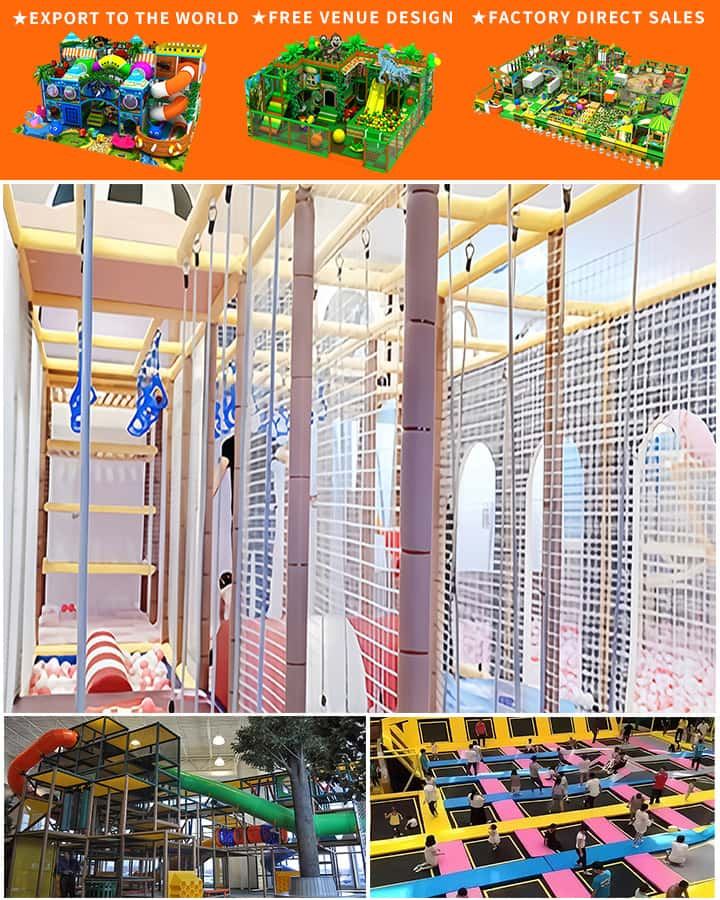Designing an indoor playground that is both fun and safe requires a blend of creativity, knowledge, and attention to detail. An indoor playground is not just a place where children can play; it’s a space that encourages physical activity, social interaction, and cognitive development. Here are some key elements to consider when planning your ultimate indoor playground design.
1. Thematic Design
A themed playground adds a layer of excitement and immersion that can captivate children’s imaginations. Whether you opt for a jungle theme, a space adventure, or a fantasy kingdom, incorporating themed elements such as murals, decorations, and themed play structures can make the experience more engaging.
2. Safe and Durable Materials
Safety is paramount in any playground design. Choose materials that are non-toxic, durable, and easy to clean. Rubber flooring and foam mats are excellent choices for cushioning falls, while soft plastics and wood can be used for various equipment pieces. Ensure that all edges are smooth and there are no sharp objects or protruding screws.
3. Age-Appropriate Equipment
Indoor playgrounds should cater to a range of ages and abilities. For toddlers, include low-height slides, soft climbing structures, and interactive panels. For older children, consider taller slides, rope bridges, and challenging obstacle courses. Make sure that each piece of equipment is appropriately sized and scaled for the age group it targets.

4. Interactive Elements
Interactive elements such as sensory walls, music stations, and digital games can add another dimension to the playground experience. These features not only entertain but also stimulate cognitive and sensory development. Incorporating technology like touchscreens or augmented reality can keep the playground feeling fresh and exciting.
5. Multifunctional Spaces
To maximize the utility of your indoor playground, create multifunctional spaces. For instance, a climbing structure with built-in seats can double as a gathering spot for storytelling sessions. Foldable tables and chairs allow for easy transition between active play and quiet activities like drawing or puzzles.
6. Natural Light and Ventilation
Natural light and good ventilation are crucial for creating a healthy indoor environment. Large windows or skylights can help illuminate the space, reducing the need for artificial lighting during the day. Proper ventilation systems ensure that the air remains fresh and reduces the buildup of carbon dioxide.
7. Soft Play Areas
Soft play areas are essential for younger children who are still developing motor skills. These areas can include ball pits, foam blocks, and soft shapes for climbing and sliding. Soft play equipment should be designed to absorb impact, minimizing the risk of injury.
8. Supervision and Staff
Adequate supervision is critical to ensure the safety and well-being of children using the playground. Train staff to monitor activities, enforce rules, and respond quickly to any accidents or issues. Having clearly defined roles and responsibilities will help maintain a smooth operation.
9. Accessibility Features
An inclusive design that accommodates children of all abilities is vital. Include ramps instead of stairs, sensory-rich toys for children with visual or hearing impairments, and designated quiet areas for those with autism or other sensory processing conditions.
10. Cleaning and Maintenance
Regular cleaning and maintenance are essential to keep the playground hygienic and in good condition. Schedule periodic deep cleanings and routine checks to identify and repair any wear and tear. Use child-safe disinfectants to sanitize surfaces and ensure that all equipment remains in optimal condition.
Conclusion
Designing an indoor playground is a multifaceted task that involves careful planning and attention to detail. By considering thematic elements, safety measures, age-appropriate equipment, and interactive features, you can create a vibrant and engaging space that delights children while ensuring their safety and development. With thoughtful design and proper maintenance, your indoor playground can become a cherished destination for kids and families alike.




